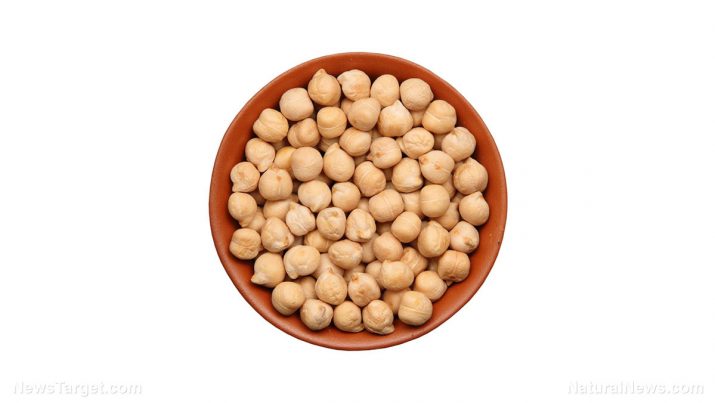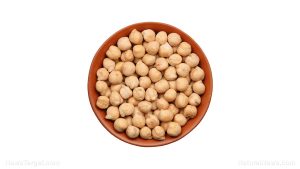
Chickpeas – sources, health benefits, nutrients, uses and constituents at NaturalPedia.com
Wednesday, June 21, 2017 by Bridgette Wilcox
http://www.naturalpedia.com/chickpeas-sources-health-benefits-nutrients-uses-and-constituents-at-naturalpedia-com.html

Chickpeas, also known as garbanzos, are a staple in Mediterranean and South Asian cuisines. According to WHFoods.com, they originated in the Middle East, where they continue to be used today. A type of legume, they come in two varieties. The more common variety is the kabuli, which has a cream to white color and a round shape. This first variety is about two times as large as the other variety, the desi, which has a darker color and a less uniform shape. Both varieties are edible, and packed with nutrients.
India, Pakistan, Turkey, and Ethiopia, and Mexico are the top producers of chickpeas around the world.

List of known nutrients
According to NutritionData.Self.com:
- Calcium
- Choline
- Copper
- Fluoride
- Folate
- Iron
- Magnesium
- Manganese
- Niacin
- Omega-3 fatty acids
- Omega-6 fatty acids
- Pantothenic acid
- Phosphorus
- Potassium
- Riboflavin
- Selenium
- Sodium
- Thiamin
- Vitamin A
- Vitamin B6
- Vitamin C
- Vitamin E
- Vitamin K
- Zinc
Medicinal uses for chickpeas
Chickpeas are highly nutritious, and one of the healthiest foods you can add to your diet. The food has endless health benefits, according to HealthFitnessRevolution.com. In particular, they are highly useful when it comes to weight loss as it is low in calories and packed with fiber and protein, allowing the body to feel full and keeping insulin in check.
The fiber content in chickpeas also lowers LDL cholesterol levels, contributing to better heart health. Fiber also aids in digestion, allowing chickpeas to relieve bowel problems such as constipation. At the same time, protein in chickpeas support the muscles, making the legume ideal for athletes and bodybuilders. Protein also keeps the nervous system healthy, ensuring the proper functioning of neurotransmitters in the brain.
Chickpeas also contain high levels of copper and iron, minerals that battle anemia and boost energy levels.
With a high level of manganese, chickpeas does wonders for the skin. Manganese is a skin antioxidant that acts as a natural sunblock, protecting the skin from harmful UV damage and decreasing rashes.
Chickpeas can aid in the management of type-2 diabetes as they contain phytochemicals that keep blood sugar at a healthy level.
They contain a significant amount of zinc, which along with copper, keeps cold-causing rhinoviruses from replicating.
Chickpeas are also rich in selenium, which supports liver function, and helps remove carcinogens from the body. This means that chickpeas can potentially aid in cancer prevention.
Body systems supported by chickpeas
- Cardiovascular system
- Digestive system
- Immune system
- Muscles
- Nervous system
- Skin
Ways to use chickpeas
Chickpeas are usually eaten as a snack between meals, though they are also filling enough to be the main entree. Based on recipes recommended by EatingWell.com, they work best in stews and curries, particularly for Mediterranean and Indian recipes. Chickpeas can also be mashed and turned into vegetarian burgers, or blended and made into hummus, which is great when paired with fresh vegetables.
Where to learn more
- Detox Your Cells for Beautiful & Flawless Skin
- Ancient Seeds: The Key to Feeding the World
- DIY Recipes You Might Want To Lick Off Your Face!
- 5 Simple Tips to Get Fit After Having Kids
- Study: For Better Health and Weight Control, Eat More Beans and Lentils
Summary
Chickpeas are good for weight loss, due to its fiber and protein content.
Chickpeas can lower LDL cholesterol levels, supporting heart health.
They help build muscle and boost energy levels.
Chickpeas can be a remedy for anemia.
Chickpeas also protect against UV damage.
They boost the immune system and prevent cold viruses from replicating.
Chickpeas can aid in diabetes management.
With their antioxidant content, chickpeas can also potentially prevent cancer.
Sources include:
Tagged Under: Tags: chickpeas





